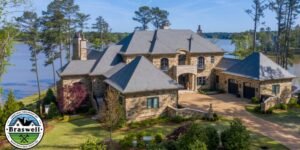By: Elle dela Cruz
What began as a rugged blend of barn and home has developed into one of the most talked-about movements in American housing. Steel-framed, highly customizable, and built to withstand the test of time, barndominiums are no longer just a rural novelty. They’re increasingly seen as a bold lifestyle choice, merging down-to-earth utility with sleek, modern comfort.
Spearheading this shift is Boss Hog Barndominiums. From its roots in Indiana, the company has grown into a national force with over 30 active builds, many more in the pipeline, and a growth strategy focused on expansion. Boss Hog delivers a full-service experience that prioritizes strength, efficiency, and personal style by challenging the conventions of traditional homebuilding, one steel beam at a time.
The Steel-Framed Advantage
Boss Hog Barndominiums prioritizes steel over traditional wood or pole barn designs, a decision backed by practicality and longevity. Their structures cost $225–$350 per square foot, often undercutting many local builders by up to 50 percent for comparable projects. The company emphasizes steel’s potential advantages over traditional materials, noting its resistance to pests, fire, and extreme weather while also highlighting its cost efficiency and recyclability. The material’s recyclability aligns with the growing demand for sustainable housing, a key selling point for eco-conscious buyers.
The company’s streamlined process, from pre-engineered kits to in-house permitting teams, typically enables builds in 7–10 months. In late 2024, Boss Hog is approaching its goal of breaking ground on 10 custom projects monthly, with plans to potentially double production by 2025. This scalability positions them to take advantage of the barndominium market, which industry analysts suggest is expanding as remote workers and multi-generational families seek affordable, spacious homes.
Crisis, Recovery, and Vertical Integration
Growth has not been seamless. In 2023 into 2024, an employee sabotage attempt and $1.1 million in contractor failures posed significant challenges to the company’s future. “We learned trust requires control,” their team states. The response was decisive: Boss Hog internalized all operations, hiring construction veteran Gerry Mann as CEO to oversee a 20+ year industry veteran-led team. Today, they manage everything from steel fabrication to interior finishes, reducing reliance on subcontractors.
This vertical integration helps the company maintain timelines, a rarity in an industry plagued by delays. Despite lingering online criticism, including BBB complaints linked by the company to “smear campaigns” by former partners, the company has scaled to 46 states. Maryland, California, Hawaii, and Alaska remain excluded due to regulatory hurdles, but licensing in all 50 states is a key objective.

Photo Courtesy: Boss Hog Barndominiums
Reimagining Custom Housing
Boss Hog’s ambitions extend beyond barndominiums. By 2026, sister brands could target luxury mountain homes and rammed-earth constructed custom homes. “Customization is the future,” the company suggests, reflecting a client base that values uniqueness over cookie-cutter designs.
The company’s turnkey model, offering design, financing, and construction under one roof, has gained traction in a fragmented market. With 100 builds planned for 2024 and over 200 annually by 2025, they aim to leverage scale to reduce costs while maintaining quality. Their $225–$350 per square foot pricing includes everything from site prep to countertops, though premium finishes may push costs higher.
Client testimonials, like that of firefighter Ashton featured on YouTube, highlight efficient communication and crisis management. Despite delays caused by a lender collapse, Boss Hog stepped in to save Ashton’s land purchase, demonstrating their hands-on ethos.
Boss Hog’s playbook—steel framing, vertical integration, and strategic hiring—has positioned them as a rare national player in a regionally dominated industry. Challenges persist, including regulatory battles and reputational repair, but their focus on scalable customization indicates potential staying power.
Published by Jeremy S.













